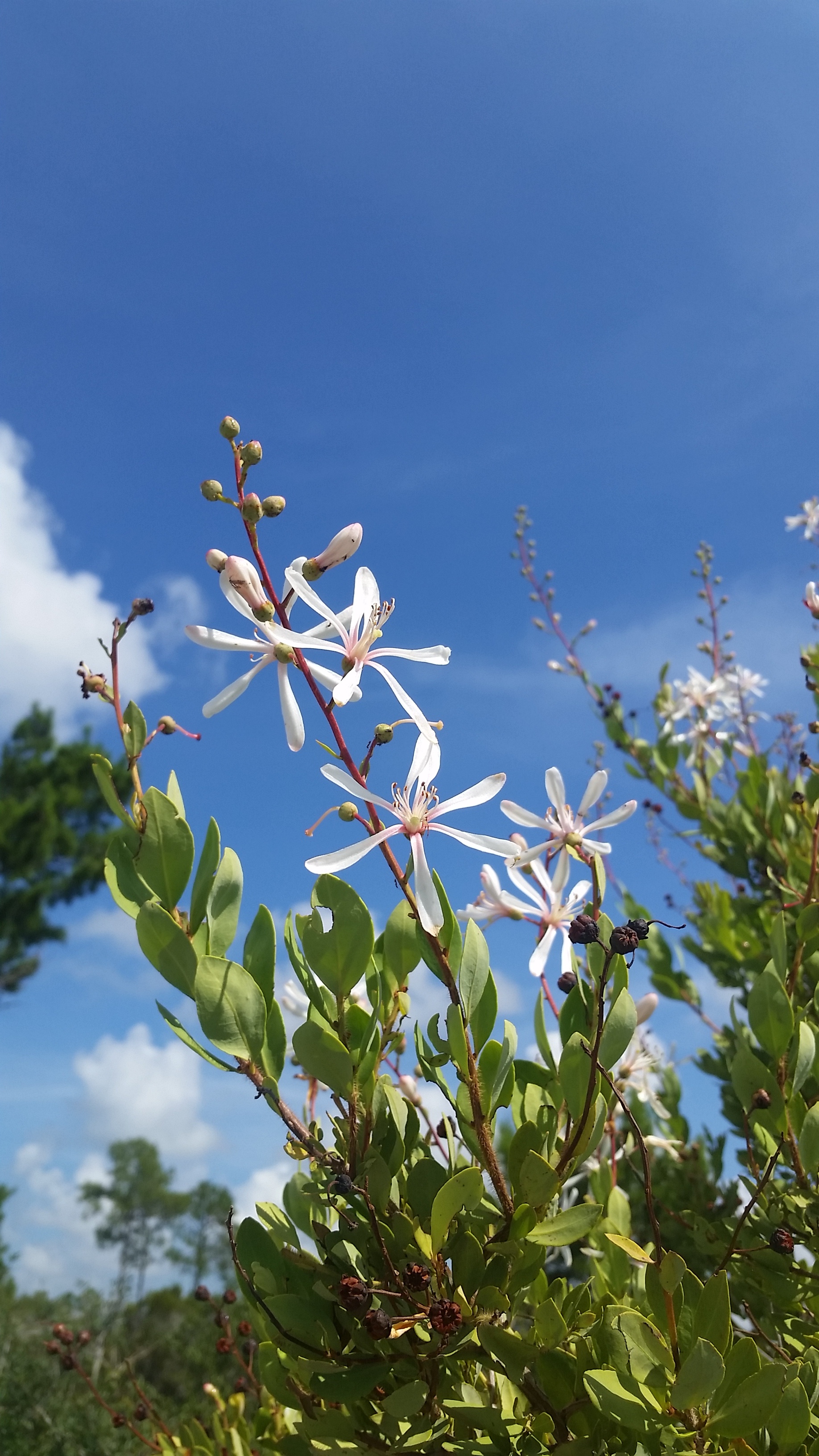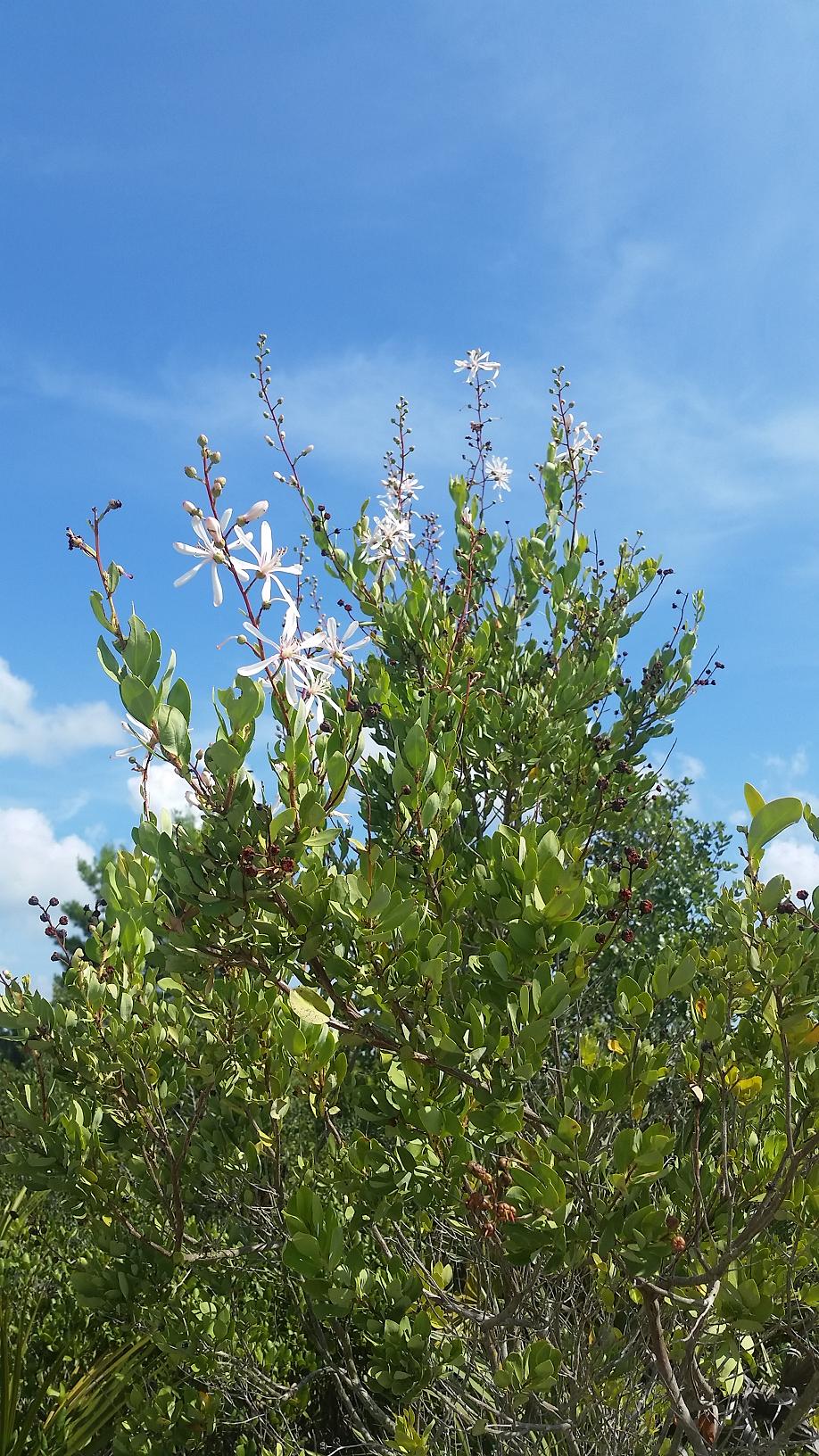Difference between revisions of "Bejaria racemosa"
KatieMccoy (talk | contribs) |
KatieMccoy (talk | contribs) (→Taxonomic notes) |
||
| Line 19: | Line 19: | ||
Common name: flyweed | Common name: flyweed | ||
==Taxonomic notes== | ==Taxonomic notes== | ||
| + | Synonym: ''Befaria racemosa'' | ||
| + | |||
==Description== | ==Description== | ||
<!-- Basic life history facts such as annual/perrenial, monoecious/dioecious, root morphology, seed type, etc. --> | <!-- Basic life history facts such as annual/perrenial, monoecious/dioecious, root morphology, seed type, etc. --> | ||
Revision as of 11:27, 2 December 2015
| Bejaria racemosa | |
|---|---|

| |
| Photo taken by Michelle Smith at Archbold Biological Station | |
| Scientific classification | |
| Kingdom: | Plantae |
| Division: | Magnoliophyta - Flowering plants |
| Class: | Magnoliopsida - Dicotyledons |
| Order: | Ericales |
| Family: | Ericaceae |
| Genus: | Bejaria |
| Species: | B. racemosa |
| Binomial name | |
| Bejaria racemosa Vent. | |

| |
| Natural range of Bejaria racemosa from USDA NRCS Plants Database. | |
Common name: flyweed
Contents
Taxonomic notes
Synonym: Befaria racemosa
Description
A description of Bejaria racemosa is provided in The Flora of North America.
B. racemosa is a long live perennial shrub with leaves that are alternate, entire and coriaceous. The leaves and stems are covered with rough, firm, and stiff hairs [1]. It grows around 2 to 5 feet high and has large white flowers tinged pink. A viscid sticky substance that entraps insects is secreted on the stem below the flower (Webster 1893).
Species in the genus Bejaria have separate petals, radial symmetry, open rotate flowers, superior ovaries, and septicidal capsules; classifying them as the most primitive genus in Ericaceae (Kron 1997)
Distribution
It is a native to southeast Georgia and throughout Florida, except in the western panhandle and the keys [2].
Ecology
Habitat
In the Coastal Plain in Florida, B. racemosa has been found in pine flatwoods, scrub barrens, and sand pine scrubs (FSU Herbarium). It is drought tolerant and is found on well drained sandy soils in full sun to light shade [3]. Associated species include Callicarpa americana, Ceratiola ericoides, Rhus copallinum, slash pine, wax myrtle, and saw palmetto [2].
Phenology
Flowers are white with a pink tinge with black, sticky dehiscent fruit [2] [4]. It has been observed flowering and fruiting May through August (FSU Herbarium).
Seed dispersal
Seed bank and germination
Fire ecology
Pollination
The following Hymenoptera families and species were observed visiting flowers of Bejaria racemosa at Archbold Biological Station (Deyrup 2015):
Apidae: Apis mellifera, Bombus impatiens, B. pennsylvanicus
Halictidae: Agapostemon splendens, Augochlorella aurata, A. gratiosa, Augochloropsis sumptuosa
Megachilidae: Anthidiellum perplexum, Anthidium maculifrons, Coelioxys sayi, Megachile brevis pseudobrevis, M. mendica, M. petulans
Vespidae: Euodynerus boscii boharti, Monobia quadridens, Parancistrocerus histrio, P. salcularis rufulus, Pseudodynerus quadrisectus, Stenodynerus fundatiformis, Zethus spinipes
Use by animals
Diseases and parasites
Conservation and Management
Cultivation and restoration
Photo Gallery
References and notes
Deyrup, M.A. 2015. Database of observations of Hymenoptera visitations to flowers of plants on Archbold Biological Station, Florida, USA.
Florida State University Robert K. Godfrey Herbarium database. URL: http://herbarium.bio.fsu.edu. Last accessed: October 2015. Collectors: Michael B. Brooks, R.K. Godfrey, R. Kral, Sidney McDaniel, Jean W. Wooten. States and Counties: Florida: Dixie, Highlands, Palm Beach, St. Johns. Compiled by Tall Timbers Research Station and Land Conservancy.
- ↑ [IFAS Extension] Accessed: December 2, 2015
- ↑ 2.0 2.1 2.2 Cite error: Invalid
<ref>tag; no text was provided for refs namedIFAS - ↑ [Natives for your neighborhood] Accessed: December 2, 2015.
- ↑ [Florida Native Plant Society]Accessed December 2, 2015

